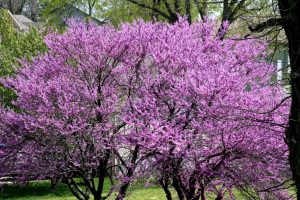“He that plants trees loves others besides himself.” – Thomas Fuller

Pollinators have been big news over the past few years. Whether you are a farmer, golf course superintendent, landscaper, gardener, or just a random person walking down the street, it is likely that you have heard the importance of protecting pollinators and doing your part to increase their habitat. We dedicated an annual conference to the subject back in 2015 and have penned numerous blog posts that cover pollinator topics.
Often the call to create habitat comes in the form of planting pollinator attractive flowers, whether they be plants for your formal garden bed or a swath of wildflower meadow along the edge of your property. For your garden, resources abound on choosing great plants. On the Pollinator Partnership webpage, you can type in your zip code and it will provide you with a guide to your particular Ecoregional Planting Guide. The Xerces Society has numerous guidelines describing how to establish wildflower meadows. And Audubon International has a new program targeting the creation of milkweed and other pollinator friendly wildflowers on golf courses called Monarchs in the Rough.
These resources, and many like them, provide wonderful information, but an opportunity that is often missed is choosing the larger plants – trees and shrubs, for their pollinator benefits. Dr. Dan Potter and Bernadette Mach put together a Woody Ornamentals for Bee-Friendly Landscapes piece for the Ohio Valley Region. The resource includes whether the tree or shrub is native or nonnative, how often the trees are visited by bees, and bloom time.

For a list of NY plants, the Lady Bird Johnson Wildflower Center and the Xerces Society for Invertebrate Conservation teamed up to create a searchable database of plants with Special Value to Native Bees. A simple search of NY trees of special value to native bees has a search result of 57 results. It lists 105 NY shrubs. And you can, of course, also look to see what wildflowers are also noted as helpful to pollinators. (259 in case you were wondering.) You can narrow the search by specifying lifespan, light requirement, soil moisture, bloom time, bloom color, height, and leaf arrangement and retention.
Why bring this up now? Because many County Soil & Water Conservation Districts are hosting their annual tree and shrub sales. Often these are small, bare root seedlings, but if you are looking for an inexpensive step to up your pollinator game, consider purchasing from them.
If you have the room for multiple species, try to choose trees and shrubs that bloom at different times to provide a food source throughout the year.
For more information on pollinators, visit the New York State Integrated Pest Management Program page dedicated to Pollinators.